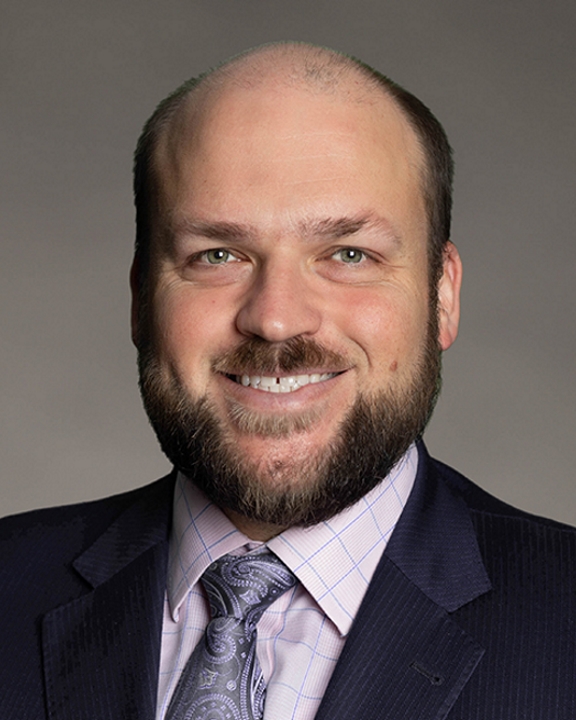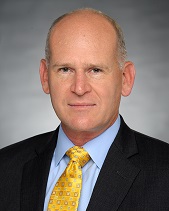California is staking out bold new requirements for commercial health plans interested in providing managed care services for Medi-Cal, the state’s Medicaid health insurance program for low-income children, adults and seniors. Up for grabs are contracts to provide Medi-Cal coverage in 33 of 58 California counties and for 38% of the state’s Medicaid population. Roughly one in three Californians, or 14.3 million people, are on Medicaid.1
The state’s new procurement requirements for Medi-Cal managed care contracts closely follow the recent, long-awaited implementation of the most recent Medicaid waiver, California Advancing and Innovating Medi-Cal (CalAIM), which went into effect January 1, 2022.
With Medi-Cal proposals due April 11, health plans and their delegated entities, including independent physician associations and clinically integrated networks, need to quickly develop a clear and compelling case about how they will comply with these new coverage rules and key tenets of the waiver. Here’s what payers and providers need to know:
What Medi-Cal managed care models fall under this procurement round?
The state is accepting managed care proposals for three model types:
- Counties with two plans
- Geographic managed care
- Regional model
County-operated health system plans (COHS), non-profit local initiative plans and single-plan models in non-COHS counties are not included in this procurement cycle.
Commercial health plans already serving in the affected counties will need to reapply. They must explain in their proposals how they will meet the increased Medi-Cal requirements, address potential gaps from prior performance years and demonstrate how their approach will generate a comprehensive network solution for the counties served. The process also opens up opportunities for commercial health plans to displace incumbents and expand to new counties and regions.
Key new requirements
Leaning heavily on the vision set forth by CalAIM, California is intent on improving Medi-Cal coverage and access, addressing disparities in care and focusing on health as well as treating illnesses and diseases. Specifically, it is expanding coverage to incorporate enhanced care management (ECM) and a range of community supports to address social determinants of health (SDoH). The key new requirements:
1. Create wellness plans for those 21 and younger.
With nearly 4 in 10 California children on Medi-Cal2, the state wants to make sure they get off to a healthy start in life by strengthening access and expanding services–and increasing accountability for both. In particular, it requires provisioning of behavioral health services and assessment and addressing of social determinants, such as nutrition, then reporting on these efforts. To support expanded, coordinated care, Community Advisory Committees must widen to include representatives for dental, social services, public health and more and managed health plans must contract with the local educational agency.
2. Develop special-needs (D-SNP) plans for dual-eligibles
Often the sickest patients, dual-eligibles are covered by both Medicare and Medi-Cal. These beneficiaries suffer due to a lack of coordination between the two programs and separate systems of care. To make it easier to navigate and receive care and services, Medi-Cal is requiring plans to create D-SNPs, which are a special type of Medicare Advantage (MA) plan. The state is offering Medicare beneficiaries the choice to join the D-SNP or stay with the fee-for-service (FFS) program or another MA plan. To build membership, then, Medi-Cal Health Plans’ D-SNPs will need to offer services and access that are attractive to dual-eligibles.
Medi-Cal is taking a phased approach to reach its goals.
- Starting in 2022, CMS will no longer enter into contracts with D-SNP look-alikes and California will discontinue Cal MediConnect (CMC) and Coordinated Care Initiatives (CCI).
- Next year, managed care plans will need to add long-term care benefits and those plans in CCI and CMC counties will move enrollees and members to D-SNPs.
- By 2025, all Medi-Cal managed care plans must begin operating D-SNPs countywide for dual-eligibles and to align D-SNP and Medi-Cal benefits in non-CCI counties.
- In 2027, Medi-Cal implements Managed Long-Term Services and Supports (MLTSS) statewide.
3. Incorporate CalAIM requirements.
Enhanced care management and community supports, or in lieu of services (ILOS), are foundational components of CalAIM, and now Medi-Cal, under the new procurement rules. Given the newness of these services under a managed care umbrella, some health plans are opting to hold the risk and continuing to use FFS reimbursement. Others are opting to compensate on a per member per month (PMPM) basis. In either case, managed care plans and providers should expect payment models and rates to evolve based on experience over time with the cost of delivery and ability to effectively engage members in these services.
4. Adhere to 85% Medical Loss Ratio.
Like the Affordable Care Act, Medi-Cal, through the 1115 Waiver, requires that plans spend at least 85% of revenue on beneficiaries–thus limiting plan administrative costs to 15%. This rule not only affects managed care plans responsible for the overall premium dollar but risk-bearing provider organizations, including IPA and Restricted Knox Keene entities, to which they delegate a share of services and financial risk.
Plans are required to have the ability to measure MLR by 2023 and begin doing so by 2025. The MLR cap creates additional rigor for plans and delegated providers to justify what falls into the MLR vs. what activities should be covered by administrative overhead.
5. Address SDoH and care inequities.
New accountability requirements include appointing a Health Equity Officer and forming a committee focused on quality improvement and health equity. Other new rules:
- Setting health equity goals, including diversifying staff with underrepresented groups and expand their cultural competency training to diversity, equity and inclusion training.
- Reporting on their progress by conducting annual population health reviews.
- Ensuring their systems integrate pop health management data using NCQA standards and have policies and procedures for sharing this data with third parties, including community-based organizations.
- Using local providers for ECM.
To assist in developing much-needed infrastructure and capacity for handling these requirements, the state has allocated more than $1 billion in incentive funds through the managed care plans to help bridge these gaps.
6. Increase oversight of delegated entities.
To strengthen access and quality, Medi-Cal is escalating managed care plan oversight of delegated entities (DEs), who are providers the plans contract with to deliver care services. The state is requiring NCQA accreditation for health plans and all network providers must register with Medi-Cal. Plans must report data on networks and encounters at the DE level. They also must certify DEs annually for compliance with network adequacy, including numbers of pediatric primary care physicians and specialists; time and distance; and timely access.
Impact on providers
The new rules have far-reaching consequences for providers. They require new ways of delivering and coordinating care. The state aims to deepen the engagement of community-based organizations, leaning on clinical providers through an expanded scope of services to bridge and manage these programs across the continuum of care into the community.
Success also depends on heightened patient and family engagement as well as new infrastructure and processes. Key to this model will be improved outreach and engagement of caregivers and members. Also critical is implementing systems and processes for documentation, data sharing and reporting, which represent a significant lift for those engaging ECM and CS services delivery or coordination.
The new rules mean managed care plans and community providers will have to engage in a new level of plan-to-plan coordination with relation to community infrastructure, program requirements and engagement of third-party vendors, such as SDoH referral management vendors to expand the ability, to manage the increased scope of services.
Many of these changes will increase administrative costs. While the state has used a rigorous approach to estimating the cost to deliver community supports, the reality is these programs vary widely to date and each community will have different circumstances. Careful consideration should be taken when reviewing scope of services, reimbursement terms and reporting requirements as well as the MLR requirement to spend 85% for patient care. While new dollars are being infused into the premium, the cost of administration and delivery represent best estimates at this early stage.
The ability of managed care plans and providers to collectively report on baseline capabilities, capacity, process metrics and outcomes will directly correlate and impact the ability to access incentive funds, let alone deliver on the vast requirements of the waiver.
Pace-setting health care reform
The ramifications of the Medi-Cal procurement and waiver requirements will likely extend far beyond the state’s border. Other states have adopted previous California pilots and approaches to improve health care coverage, coordination of services, and access. New York State is already weighing similar measures and Texas is preparing to launch a new Medicaid procurement process soon.
Planning for this new procurement process has been underway for years. Now, amid the CalAIM implementation, the final weeks for those applying to become Medi-Cal managed plans will come down to which payers and their provider partners can make the most compelling case to the state to deliver on the vision and translate the requirements into a sustainable model for each community.
Procurement is a call to action as much as it is a reset of the status quo. It’s designed to push managed care plans and provider networks to rise to the challenge of ensuring the most at-risk populations benefit from lessons learned, using a competitive process so the best-fit models are scaled across the state.
To learn how COPE Health Solutions can support your organization to ensure success amidst these market changes, please contact us at info@copehealthsolutions.com.
Footnotes
1 Medi-Cal Eligibility Statistics
2 California Health Care Foundation, 2021 Edition—Medi-Cal Facts and Figures


